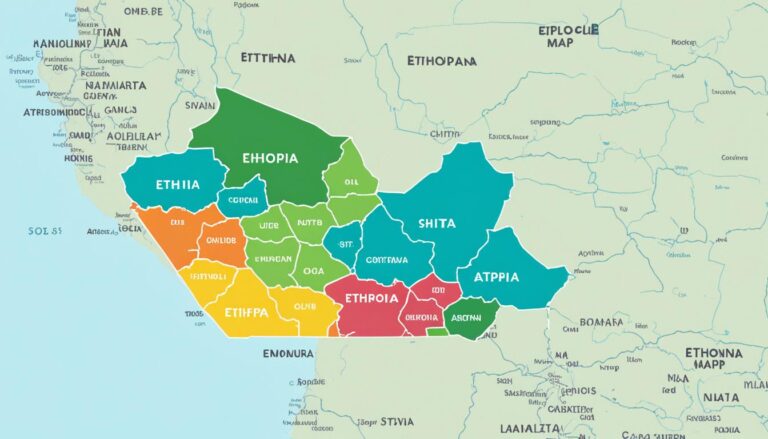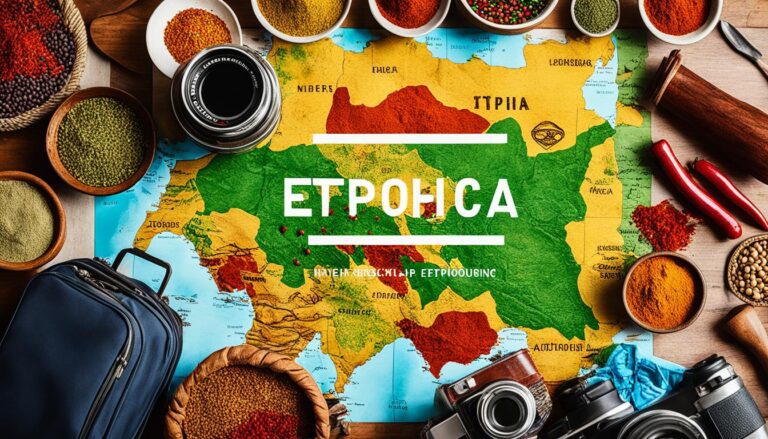What Is The Significance Of The Ethiopian Calendar?
The Significance of the Ethiopian Calendar
The Ethiopian calendar, also known as the Ge’ez calendar, holds significant cultural, religious, and historical importance in Ethiopia. Introduced by Emperor Ge’ez Sarsa Dengel in the 16th century, it follows the ancient Coptic Alexandrian calendar. One of the unique aspects of this calendar is that it consists of thirteen months; twelve months with thirty days each and a thirteenth month with five days (or six in a leap year). This variation from the widely used Gregorian calendar is just one of the many characteristics that sets the Ethiopian calendar apart and underscores its significance.
Ethiopia is among the few countries in the world that still follow a different calendar system. The Ethiopian New Year falls on September 11th (or the 12th in a leap year according to the Gregorian calendar). This disparity in dates showcases the rich cultural heritage and independence of Ethiopia. The Ethiopian Orthodox Tewahedo Church also plays a crucial role in the adoption and preservation of this calendar, integrating it into religious festivals and rituals.
Moreover, the Ethiopian calendar influences various aspects of Ethiopian life, including agriculture, trade, and societal events. The timing of religious holidays, planting seasons, and harvest festivals align with the unique structure of this calendar. Understanding and following the Ethiopian calendar is essential for farmers in determining the right time for planting crops and celebrating bountiful harvests.
In addition, the Ethiopian calendar symbolizes resilience and continuity in the face of historical challenges. Despite colonial influences and attempts to replace it with the Gregorian calendar during the Italian occupation in the 1930s, the Ethiopian calendar has endured and stands as a testament to the country’s identity and pride.
The Ethiopian calendar is not merely a system of timekeeping; it embodies the rich cultural heritage, religious traditions, and historical legacy of Ethiopia. Its significance resonates across the country, shaping daily life, festivities, and the collective memory of its people. The Ethiopian calendar stands as a timeless symbol of Ethiopia’s past, present, and future.
Exploring the Historical Background of the Ethiopian Calendar
The Ethiopian calendar, also known as the Ge’ez calendar, has a rich historical background that sets it apart from other calendars in use today. It traces its origins back to the ancient Kingdom of Aksum, which was one of the great civilizations of the ancient world. The Ethiopian calendar is based on the Coptic calendar, which in turn derives from the ancient Egyptian calendar. The influence of these ancient civilizations is evident in the structure and traditions of the Ethiopian calendar.
One of the most striking features of the Ethiopian calendar is its unique way of calculating the passage of time. While the Gregorian calendar is based on the solar year, the Ethiopian calendar follows a solar-lunar system. This means that the Ethiopian year is divided into 13 months, 12 of which have 30 days each, and a 13th month, known as Pagume, which has 5 or 6 days, depending on whether it is a leap year. This intricate system reflects the calendar’s ancient roots and the cultural significance of timekeeping in Ethiopian society.
The Ethiopian calendar also has a distinct New Year’s Day, known as Enkutatash, which falls on September 11th (or September 12th in a leap year) according to the Gregorian calendar. Enkutatash is a time of great celebration in Ethiopia, marked by feasting, dancing, and the exchanging of gifts. It holds cultural and religious significance, symbolizing the end of the rainy season and the renewal of life and nature.
The historical background of the Ethiopian calendar is a testament to the richness of Ethiopia’s cultural heritage and its deep connections to ancient civilizations. The unique way in which time is calculated, the special New Year’s Day celebration, and the influence of traditions from the Kingdom of Aksum all contribute to the significance of the Ethiopian calendar in the country’s cultural and religious life.
Exploring the Unique Features of the Ethiopian Calendar
The Ethiopian calendar, also known as the Ge’ez calendar, stands out as a distinctive system due to its unique features that set it apart from other calendars used around the world. One of the most notable aspects of the Ethiopian calendar is that it follows the ancient Coptic calendar closely and is based on the ancient Egyptian solar calendar. This reflects the deep historical roots and cultural significance of the calendar within Ethiopia.
Unlike the Gregorian calendar, which has 365 days in a common year and 366 days in a leap year, the Ethiopian calendar consists of 13 months. Twelve of these months have 30 days each, and the remaining month, Pagumē, has either five days in a common year or six days in a leap year. This additional month aligns the Ethiopian calendar more closely with astronomical events related to the movement of the sun and stars.
Moreover, the Ethiopian calendar is roughly seven to eight years behind the Gregorian calendar. This discrepancy is due to variances in calculating the date of the Annunciation of the birth of Jesus Christ. As a result, when the rest of the world celebrates the New Year on January 1st, Ethiopians mark the start of the year on Meskerem 1, which falls on September 11th (or September 12th in leap years).
Another intriguing aspect of the Ethiopian calendar is that it operates on a different timeline for sunrise and sunset compared to the Gregorian calendar. For instance, in the Ethiopian system, dawn is considered to be at 12:00, sunrise at 6:00, the start of the day at 12:00, sunset at 18:00, and dusk at 18:00. This unique time-keeping method reflects the cultural nuances and traditions embedded in the Ethiopian way of life.
Furthermore, the Ethiopian calendar incorporates a rich tapestry of religious and cultural festivals, rituals, and traditions that are intertwined with the months and days of the calendar. These celebrations provide a glimpse into the vibrant and diverse heritage of Ethiopia, showcasing the blend of Christian, Islamic, and traditional beliefs that shape the country’s social fabric.
The Ethiopian calendar’s unique features not only reflect the country’s historical and cultural heritage but also highlight its distinct way of measuring time and celebrating life’s milestones. Embracing the Ethiopian calendar is not just about keeping track of dates; it is a way to honor tradition, spirituality, and community in a manner that is truly unique to this East African nation.
Comparison between the Ethiopian Calendar and the Gregorian Calendar
The Ethiopian calendar, also known as the Ge’ez calendar, and the Gregorian calendar are two distinct systems for measuring time. While the Gregorian calendar is widely used globally, the Ethiopian calendar is specific to Ethiopia and has unique features that set it apart. Let’s delve into a comparison of these two calendars to understand their differences and significance.
Origin and Structure:
The Gregorian calendar, introduced by Pope Gregory XIII in 1582, is a solar calendar based on the Earth’s revolution around the sun. It consists of 365 days in a common year and 366 days in a leap year. In contrast, the Ethiopian calendar traces its origins back to the ancient Coptic calendar of Egypt. It follows a similar structure to the Coptic calendar with 13 months, 12 of which have 30 days each, and a 13th month called Pagumē with 5 days (6 days in a leap year).
Epoch and Leap Years:
The Gregorian calendar’s epoch is dated back to the birth of Jesus Christ, while the Ethiopian calendar’s epoch is fixed at 8 years before the birth of Christ. This results in a 7 to 8-year gap between the two calendars. Both calendars have a leap year system to account for the extra time it takes for the Earth to orbit the sun. However, the rules for calculating leap years differ between the two calendars, leading to differences in their alignment with the solar year.
Cultural and Religious Significance:
The Ethiopian calendar holds immense cultural and religious significance in Ethiopian society. It is used to determine the dates of religious holidays and festivals, as well as traditional events and ceremonies. For example, the Ethiopian New Year, known as Enkutatash, falls on September 11th (or September 12th in a leap year) in the Gregorian calendar. This day holds great cultural importance and is celebrated with feasting, music, and dancing across Ethiopia.
Synchronization Challenges:
The difference in epoch and leap year calculations between the Ethiopian and Gregorian calendars poses challenges when it comes to aligning dates between the two systems. This can create confusion for international scheduling, communication, and financial transactions involving Ethiopia. Efforts have been made to bridge this gap, but discrepancies still persist, especially in the digital age where precise date synchronization is crucial.
While the Ethiopian and Gregorian calendars serve the purpose of tracking time, each has its own unique characteristics and cultural significance. Understanding the differences between these two systems sheds light on the diverse ways in which time is measured and celebrated across different cultures and traditions.
The Cultural and Religious Influences on the Ethiopian Calendar
The Ethiopian calendar, also known as the Ge’ez calendar, is deeply rooted in the country’s rich cultural and religious traditions. With origins dating back over two millennia, the calendar reflects the unique blend of influences from Christianity, Judaism, and indigenous beliefs that have shaped Ethiopian society.
One of the most significant cultural influences on the Ethiopian calendar is the Ethiopian Orthodox Tewahedo Church, which plays a central role in the lives of many Ethiopians. The church follows its own set of religious holidays and celebrations, many of which are based on the Ethiopian calendar. For example, Timkat, the Ethiopian Epiphany celebration, is an important holiday that falls on the 19th of January in the Gregorian calendar.
Moreover, the Ethiopian calendar is also closely tied to the country’s agricultural seasons and traditional practices. The calendar consists of 13 months, with 12 months having 30 days each and a final 13th month known as Pagume being either five or six days long. This unique structure reflects the agricultural cycles in Ethiopia and is still followed by many farmers and rural communities in the country.
The Ethiopian calendar’s religious influences are evident in the way it marks important Christian festivals such as Christmas and Easter. For example, Genna, the Ethiopian Christmas celebration, is observed on the 29th of Tahsas, which corresponds to January 7th in the Gregorian calendar. Similarly, Fasika, the Ethiopian Easter, is celebrated after Lent and falls around April or May in the Western calendar.
In addition to religious and cultural influences, the Ethiopian calendar also has a significant social impact on the daily lives of Ethiopians. Many festivals and holidays are based on the calendar, bringing communities together for prayer, feasting, and traditional ceremonies. The Ethiopian New Year, known as Enkutatash, is a joyous celebration that marks the end of the rainy season and the beginning of a new year according to the Ethiopian calendar.
The Ethiopian calendar’s cultural and religious influences are deeply intertwined with the fabric of Ethiopian society. Its unique blend of traditions, beliefs, and practices makes it a vital aspect of the country’s identity and heritage, serving as a reminder of Ethiopia’s rich cultural diversity and long history.
Conclusion
The Ethiopian calendar holds profound significance, reflecting the rich history, cultural heritage, and religious beliefs of Ethiopia. It stands as a symbol of resilience and independence against colonial influences, maintaining its unique identity through the centuries. With a historical background dating back to ancient times, the Ethiopian calendar showcases its distinct features such as the leap year system, the 13-month structure, and the New Year’s Day celebration known as Enkutatash. By comparing it to the Gregorian calendar, one can appreciate the differences in calculations, seasons, and traditional festivities observed by Ethiopians.
The Ethiopian calendar’s reliance on religious events like Christmas and Easter, as well as cultural practices tied to agricultural cycles, illustrates the deep-seated connection between timekeeping and societal customs. This intertwining of culture, religion, and time echoes the holistic worldview of the Ethiopian people, emphasizing harmony with nature and spiritual devotion. The Ethiopian calendar not only marks the passage of time but also serves as a cultural touchstone, guiding rituals, celebrations, and daily life in Ethiopia.
With its unique set of months, days, and traditions, the Ethiopian calendar stands as a testament to the country’s cultural resilience and unwavering commitment to preserving its heritage. As one delves into the intricacies of this ancient calendar system, it becomes apparent that time in Ethiopia is not just a measure of days and months but a reflection of a nation’s history, values, and way of life. The Ethiopian calendar bridges the gap between past and present, connecting generations through shared experiences, beliefs, and celebrations that continue to shape Ethiopian identity to this day.
In essence, the Ethiopian calendar is not merely a tool for tracking time but a living testament to Ethiopia’s profound cultural and historical legacy. Its unique structure, rooted in centuries-old traditions and religious observances, distinguishes it from other calendar systems worldwide. As Ethiopia continues to embrace modernity while cherishing its heritage, the Ethiopian calendar remains a poignant reminder of the country’s enduring traditions, resilience, and vibrant cultural tapestry. Whether celebrating Enkutatash, observing religious holidays, or honoring age-old customs, Ethiopians find solace and connection in the timeless rhythms of their calendar, a timeless symbol of their nation’s enduring spirit.






